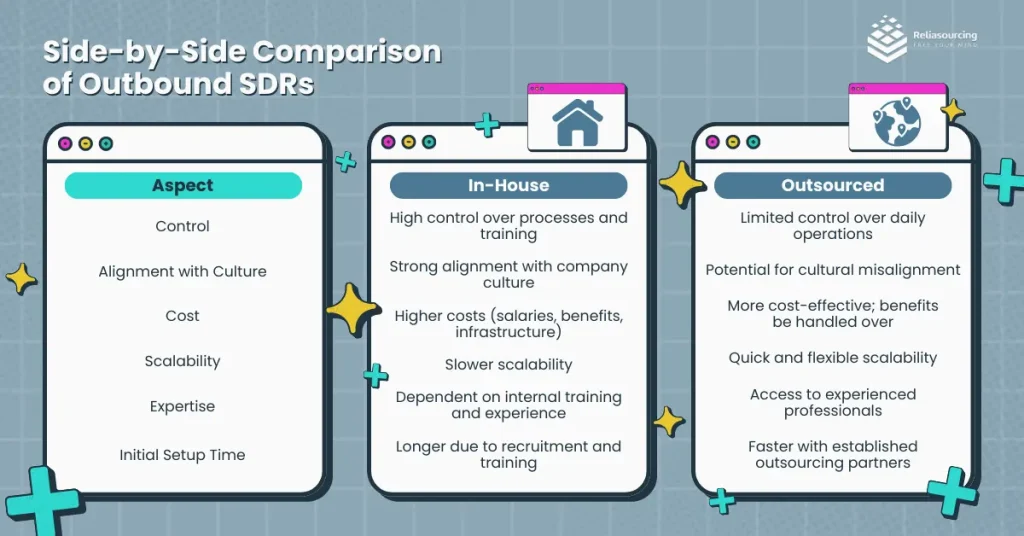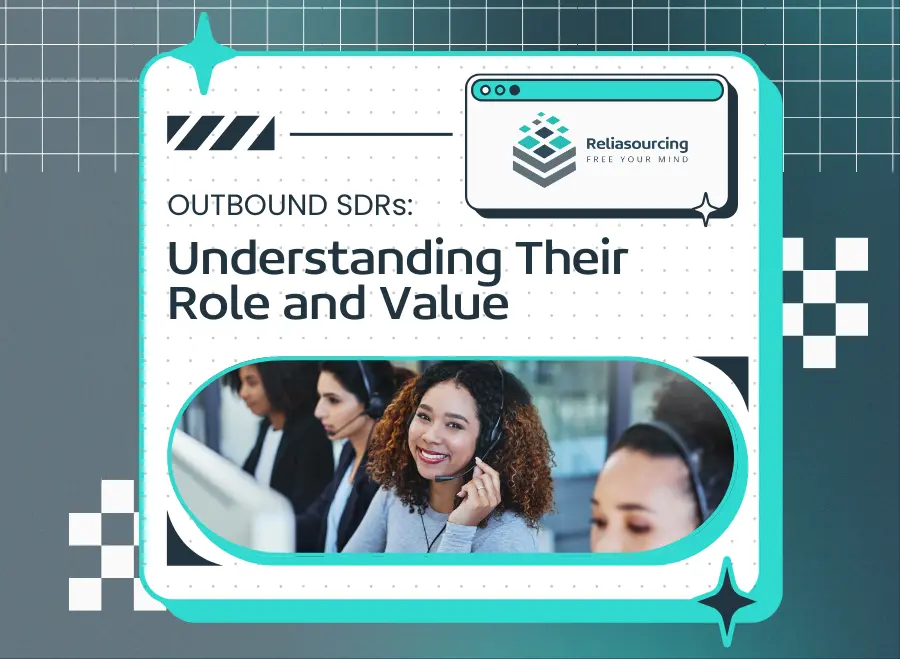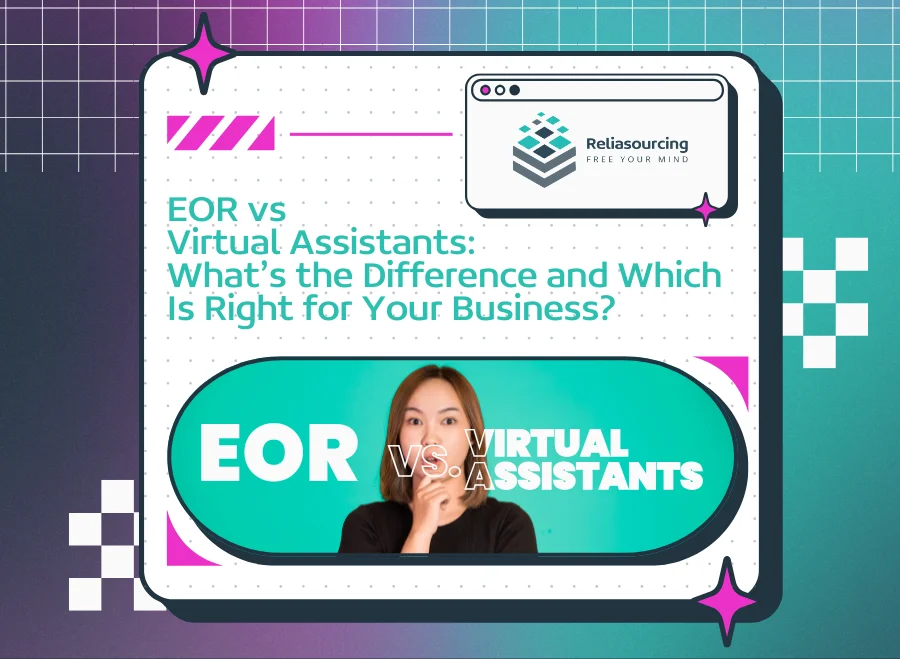Among the various types of sales development representatives (SDRs), outbound SDRs are particularly vital as they proactively seek out potential clients and generate leads. This article delves into outbound SDRs, comparing them with their inbound counterparts, outlining their key responsibilities, and evaluating their performance. Additionally, we will explore whether it’s more beneficial to keep outbound SDRs in-house or to outsource this function and how outsourcing can be the perfect partner for you.
What is an Outbound SDR?
An outbound SDR is a sales professional responsible for initiating contact with potential customers who have not previously expressed interest in a company’s products or services. Unlike inbound SDRs, who handle leads generated through marketing efforts, outbound SDRs engage in cold calling, email campaigns, and social selling to create new business opportunities.
Outbound SDRs utilize advanced CRM systems, automation tools, and data analytics to optimize their efforts. Despite these technological advancements, the fundamental principles of outbound sales—proactive outreach, persistence, and relationship-building—remain unchanged.
Inbound vs. Outbound SDR
When talking roles, inbound and outbound SDRs differ in their approaches to lead generation and engagement. Inbound SDRs work with warm leads generated by marketing activities and focus on nurturing them through the sales funnel.
Inbound SDR
The management of leads by inbound SDRs is done through marketing channels such as website inquiries, social media, and content marketing. Their primary role is qualifying and guiding these leads through the sales funnel.
In perspective, a potential customer searches for a solution to a specific problem on Google and lands on your company’s blog. They fill out a form to download a whitepaper. The inbound SDR receives the contact information and follows up with the potential customer to qualify them based on their needs and interest level. If the lead is a good fit, the SDR schedules a demo with a sales representative.
Outbound SDR
Outbound SDRs proactively reach out to prospects who may not yet be aware of the company’s offerings. This approach requires a different skill set, including resilience and the ability to handle rejection, as outbound efforts often involve a high volume of unresponsive or uninterested contacts.
For instance, an outbound SDR researches a list of companies that fit the target customer profile. They identify decision-makers and reach out through cold emails and calls. One prospect shows interest in learning more about the company’s product. The SDR then schedules a meeting to discuss how the product can solve the prospect’s specific challenges.
Key Differences
- Lead Generation: Inbound SDRs rely on leads generated by marketing efforts, while outbound SDRs actively seek out and contact potential leads.
- Engagement: Inbound leads have already shown some interest in the company, whereas outbound leads may have no prior knowledge of the company’s offerings.
- Skills: Inbound SDRs focus on nurturing and qualifying warm leads, while outbound SDRs need strong research, persistence, and communication skills to engage cold leads effectively.
Understanding the distinctions between inbound and outbound SDRs is crucial for aligning your sales strategy with your business goals. While inbound SDRs are essential for nurturing warm leads generated by marketing, outbound SDRs play a critical role in expanding your reach by actively pursuing new opportunities.
Key Responsibilities of an Outbound SDR
The key responsibilities of an outbound SDR highlight their critical role in driving business growth through effective lead generation, direct outreach, and continuous engagement. Outbound SDRs ensure a robust and dynamic sales pipeline by identifying high-quality leads, initiating contact, and nurturing relationships through various channels, ultimately leading to increased sales and business success.
Lead Generation
Identifying potential leads through research and various databases.
Expert’s insight: Effective lead generation ensures the sales pipeline is continuously filled with potential customers, increasing the chances of converting these leads into actual sales. Having thoroughly researched and identified high-quality leads, businesses can focus their resources on prospects with the highest potential for conversion.
Cold Calling
Initiating contact with prospects through phone calls.
Expert’s insight: Cold calling allows businesses to reach out directly to potential customers, introducing them to the company’s products or services. This direct approach can quickly identify interested prospects, facilitating faster sales cycles and immediate feedback on offerings.
Email Outreach
Crafting and sending personalized emails to engage prospects.
Expert’s insight: Personalized email outreach can effectively engage potential customers by addressing their needs and pain points. This targeted communication helps build relationships, foster trust, and nurture leads through the sales funnel, ultimately leading to higher conversion rates.
Social Selling
Leveraging social media platforms like LinkedIn to connect with potential clients.
Expert’s insight: Social selling enables SDRs to engage with prospects on platforms where they are active, such as LinkedIn. By building a professional online presence and interacting with potential clients through social media, SDRs can establish credibility, gain insights into prospects’ interests, and create opportunities for meaningful engagement.
Follow-ups
Consistently follow up with leads to maintain engagement.
Expert’s insight: Social selling enables SDRs to engage with prospects on platforms where they are active, such as LinkedIn. SDRs can establish credibility, gain insights into prospects’ interests, and create opportunities for meaningful engagement by continuously building a professional online presence and interacting with potential clients through social media.
Appointment Setting
Scheduling meetings between potential clients and sales executives.
Expert’s insight: Efficient appointment setting bridges the gap between prospecting and closing deals. Arranging meetings between interested prospects and sales executives ensures SDRs hand over qualified leads to the sales team at the right time, facilitating a smooth transition and increasing the chances of closing the sale.
Measuring the Success of Outbound SDRs
The performance of outbound SDRs can be measured using several key metrics, supported by actual data from companies that have benefited from availing these services.
- Number of Calls Made
Outbound SDRs can make an average of 80–120 daily calls, depending on industry and campaign scope. Companies employing outbound SDR teams often report up to a 40% increase in total outreach efforts, enabling expanded market penetration and heightened brand visibility.
- Emails Sent
A well-structured email outreach strategy led by SDRs can generate 32.7% better response rates than unstructured campaigns. Studies show personalized email campaigns can improve engagement, with open rates averaging 39.7% and click-through rates around 3–7%.
- Response Rate
Response rates serve as a benchmark for SDR effectiveness. Data indicates that outbound SDR teams who send out effective outreach can achieve response rate as high as 30% with tailored and multi-channel approaches, significantly outperforming generic outreach strategies.
- Meetings Scheduled
Effective SDR teams contribute to a 20–30% increase in meetings scheduled with qualified leads. This directly accelerates the sales pipeline by prioritizing high-quality prospects.
- Conversion Rate
When handled by skilled SDR teams, the conversion rate from leads to opportunities often boosts, ranging from 10% to 25% based on industry insights. This improvement is attributed to targeted outreach and robust follow-up strategies that nurture prospects effectively.
These metrics collectively provide a comprehensive picture of how outbound SDRs contribute to business growth and sales efficiency.
Comparing In-House vs. Outsourced Outbound SDRs
Expanding on the differences between in-house and outsourced outbound SDRs provides a comprehensive view of the benefits and challenges of each option. The comparison highlights that outsourcing can offer significant cost, flexibility, and expertise advantages, making it a viable solution for companies aiming to scale their sales operations efficiently.
In-House Outbound SDRs
Pros:
- Greater Control over Training and Processes: In-house teams can be trained according to specific company standards and adjusted to meet changing requirements.
- Alignment with Company Culture: In-house employees are more likely to be immersed in and contribute to the company culture, ensuring that the company’s values and messaging are consistently reflected.
Cons:
- Higher Costs: Maintaining an in-house team includes salaries, benefits, and infrastructure costs. For example, hiring an SDR in-house can cost upwards of $70,000 annually when factoring in recruitment, training, and benefits.
- Slower Scalability: Scaling an in-house team requires time and resources, including recruiting, training, and additional office space. This can slow down the ability to rapidly increase sales efforts.
Outsourced Outbound SDRs
Pros:
- Cost-Effective: Outsourcing can reduce costs significantly. EngageTech’s Outsourced SDR services helped Cloudar expand into new European markets at a fraction of the cost compared to hiring in-house.
- Flexible: Companies can scale their SDR efforts up or down based on current needs without the burden of long-term commitments.
- Access to Experienced Professionals: Outsourcing firms often have seasoned SDRs who bring best practices and proven strategies. This expertise can result in quicker ramp-up times and better initial performance.
- Quick Scalability: Outsourcing allows for rapid scaling of sales efforts without the delays associated with hiring and training new staff.
Cons:
- Less Control over Daily Operations: Companies may have limited oversight over the day-to-day activities of outsourced SDRs.
- Potential Cultural Misalignment: There can be challenges in ensuring that outsourced SDRs fully understand and represent the company’s culture and values.

FAQ
How does an outbound SDR generate leads?
Outbound SDRs generate leads through cold calling, email outreach, and social selling. They utilize various tools and databases to identify and engage potential clients.
What skills are important for an outbound SDR?
Key skills for an outbound SDR include excellent communication, resilience, ability to handle rejection, research skills, and proficiency in sales tools and CRM systems.
What are some effective strategies for outbound SDRs?
Effective strategies for outbound SDRs include personalized outreach, multi-channel engagement, persistent follow-ups, and leveraging data to refine targeting.
What are common challenges faced by companies that use outbound SDRs?
Companies using outbound SDRs face common challenges, including high rejection rates, maintaining engagement with prospects, and ensuring consistent lead quality.
How Reliasourcing Helps with Outbound SDRs
Reliasourcing offers comprehensive outbound Sales Development Representative (SDR) services to help businesses scale their sales efforts effectively. Combined with expert personnel, advanced technology, and data-driven strategies, Reliasourcing helps businesses achieve their growth objectives.
Optimizing the Sales Process for Maximum Efficiency
Our SDRs are experts in lead qualification, meticulously filtering through prospects to identify those with the highest likelihood of conversion. At Reliasourcing, our sales and customer support process applies a multi-touchpoint strategy that includes personalized emails, phone calls, and social selling tactics to nurture leads throughout their buyer journey.
- Streamlined Lead Qualification: Our experts focus on identifying high-conversion prospects, ensuring only qualified leads are passed to your sales team. Filtering out unqualified or cold leads saves time.
- Multi-Touchpoint Outreach: We employ a blend of personalized emails, phone calls, and social selling to engage leads across their journey. This creates purposeful interactions to optimize resource allocation.
Increased Sales Through Strategic Prospecting
Reliasourcing leverages data-driven strategies to identify and engage potential customers that align with your ideal customer profile (ICP). Our SDRs use advanced prospecting tools and techniques, such as intent data analysis and behavioral triggers, to pinpoint high-potential leads.
- Data-Driven Prospecting: This strategy utilizes advanced tools like intent data analysis and behavioral triggers to pinpoint high-potential leads and ensures alignment with your ideal customer profile (ICP).
- Boosted Sales Pipeline: We help build a robust sales funnel with qualified opportunities, which shortens sales cycles and speeds up revenue generation.
Summary
Optimizing your sales development process is crucial for sustained business growth. Outsourcing your SDR functions to a specialized provider like Reliasourcing offers the strategic advantage of expertise, efficiency, and scalability without the high costs of maintaining an in-house team. By partnering with Reliasourcing, you gain access to cutting-edge tools and seasoned professionals dedicated to identifying, nurturing, and converting high-potential leads. This not only enhances your sales pipeline but also accelerates your revenue generation, allowing your business to thrive in dynamic markets.
Choosing to outsource your SDR services is not just a tactical decision—it’s a strategic move that empowers your business to focus on core competencies while we handle the complexities of sales development. Let Reliasourcing be the key to unlocking your business’s full growth potential, providing you with the resources, flexibility, and results needed to stay ahead of the competition.
Contact our experts today!









